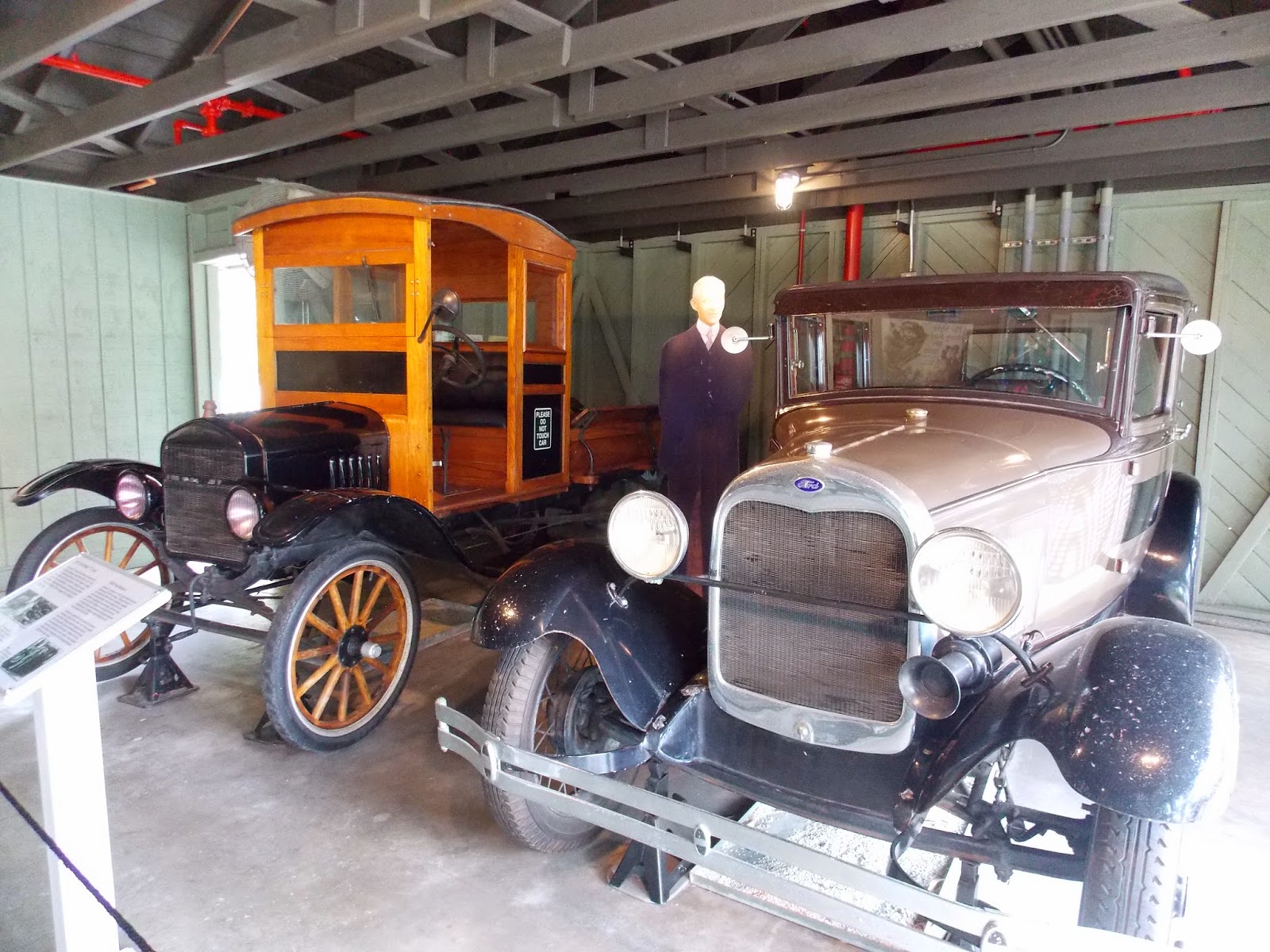The relationship he had with Henry Ford is a fascinating story. Henry Ford was the chief engineer at the Edison Illuminating Company in 1893. He shared with Edison his ideas for building an automobile, and Edison encouraged him as well as served as his mentor in the ensuing years. In 1914 Ford visited Edison at his winter estate. In 1916 he purchased a winter home next door to Edison which he called The Mangoes. According to our tour guide, Ford in reality did not like Florida for a variety of reasons. However, he did come down for Edison's birthday in February. They did a lot of fishing and camping together.
In comparison to Edison's home, Ford's house is a rather simple building in the Craftsmen style. His home is furnished with period antiques, unlike Seminole Lodge which still has furnishings original to the home. Ford's living room, pictured above, features a double mantle and French doors.
In Ford's garage are several of his earlier automobiles as the "Tin Lizzie'' as well as a Model A Ford. On the left, in the picture above, is an early Ford pickup. Our tour guide informed us that the work "pickup" refers to the fact that originally when ordered it came by rail in a crate. The owner was then called to pick it up- hence the name. The truck had to be then constructed using the wooden crate for its upper frame.
As many of you are aware, Edison patented numerous inventions over his lifetime. Part of the estate tour took us through a museum which displayed many of them. After inventing the tin foil phonograph in the 1880s, Edison tried to find commercial uses for his invention. Pictured above is his "Dollphone", a talking doll that could recite nursery rhymes. It was a 22 inch doll that sold for $10.00 to $25.00, depending how deluxe you wanted your doll to be. Out of the 3,000 Edison made, only 500 were sold before he recalled them. However, it paved the way for him to later make many achievements in the recording industry. Another surprise for me was the fact that there was an Edison Portland Cement factory- in the early 20th century it was one of the largest producers of cement in the United States. There is so much more I learned while visiting the winter estates, what I have written are some of the highlights. I will conclude this with a picture of another one of the blooming plants which we saw in the gardens, called Turk's Cap- another interesting name for it is Sleepy Hibiscus. It does look like the closed flower of a hibiscus!





No comments:
Post a Comment